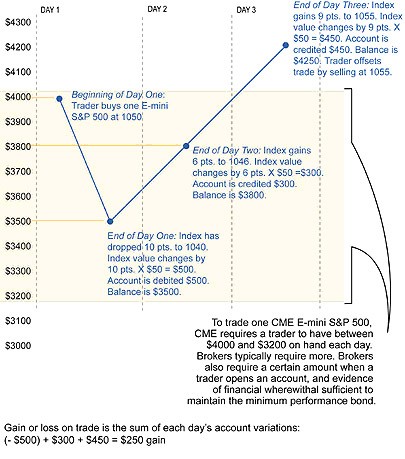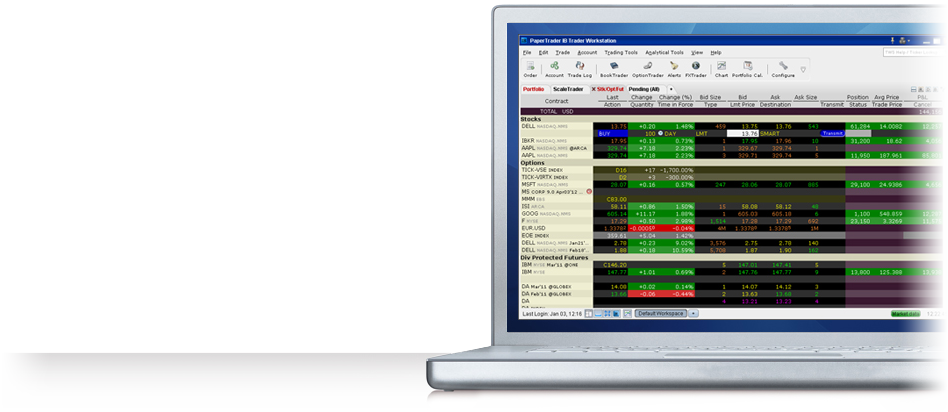Understanding Margin Accounts Why Brokers Do What They Do
Post on: 11 Июнь, 2015 No Comment

Smart Investing
Understanding Margin Accounts, Why Brokers Do What They Do
We are issuing this investor guidance to provide some basic facts to investors about the mechanics of margin accounts. We encourage any investor reading this communication to also read Purchasing on Margin, Risks Involved with Trading in a Margin Account .
How Margin Calls Work in Volatile Times
Many margin investors are familiar with the routine margin call, where the broker asks for additional funds when the equity in the customers account declines below certain required levels. Normally, the broker will allow from two to five days to meet the call. The brokers calls are usually based upon the value of the account at market close since various securities regulations require an end-of-day valuation of customer accounts. The current close for most brokers is 4 p.m. Eastern time.
However, in volatile markets, a broker may calculate the account value at the close and then continue to calculate calls on subsequent days on a real-time basis. When this happens, the investor might experience something like the following:
Day one close: A customer has 1,000 shares of XYZ in his account. The closing price is $60, therefore, the market value of the account is $60,000. If the brokers equity requirement is 25 percent, the customer must maintain $15,000 in equity in the account. If the customer has an outstanding margin loan against the securities of $50,000, his equity will be $10,000 ($60,000 — $50,000 = $10,000). The broker determines the customer should receive a margin call for $5,000 ($15,000 — $10,000 = $5,000).
Day two: At some point early in the day the broker contacts the customer (e.g. by an e-mail message) telling the customer he has x number of days to deposit $5,000 in the account. Shortly thereafter, on Day two, the broker sells the customer out without notice.
In many cases, brokers have computer-generated programs that will issue an alarm (and/or take automatic action) in the event the equity in a customers account further declines. For example, assume the value of the XYZ stock in the customers account continues to decline during the morning of Day two by another $6,000, that is, the shares are now worth only $54,000. The customer still has a loan outstanding to the broker of $50,000, but now the broker only has $54,000 in market value securing that loan. So, based upon the subsequent decline, the broker decided to sell shares of XYZ before they could decline even further in value.
Had the value of the securities stayed at about $60,000, the broker probably would have allowed the customer the stated number of days to meet the margin call. Only because the market continued to decline did the broker exercise its right to take further action and sell out the account.
What could the customer have done to avoid this?
The bottom line is that margin accounts require work on behalf of the customer. Information about the price of a stock is available from any number of sources. In fact, many investors check these prices on a daily basis, if not several times a day. An investor is free to deposit additional cash into a margin account at any time in an attempt to avoid a margin call. However, even if additional deposits are made, subsequent declines in the market value of securities in the account may result in additional margin calls. If an investor does not have access to funds to meet a margin call, he should probably not be using a margin account. While cash accounts do not provide the leverage that a margin account does, cash accounts are easier to maintain in that they do not require the vigilance that a margin account requires.
Partial Sell Outs
In a partial sell out, somebut not allthe securities in a customers account will be sold out.
Mr. Jones has three stocks in his account totaling $90,000 in market value: $30,000 in ABC for which he has a substantial long-term (i.e. capital) gain, $30,000 in DEF in which he has a large loss (which could be used to offset gains in stocks sold earlier in the year), and $30,000 in GHI in which he has a short-term gain for tax purposes. Each stock has a 25 percent maintenance margin requirement. Mr. Jones has a $6,000 unmet maintenance margin call, so the broker sold out some of his securities. The broker chose to sell out GHI. Mr. Jones is in a very high tax bracket, so the sale results in a large tax bill for him. Mr. Jones is upset as he would have preferred the broker sell out either of the other two securities.
Ms. Young has $10,000 each in stocks JKL, MNO, and PQR. JKL is a fairly stable stock so the broker requires only the standard 25 percent maintenance margin requirement on it. MNO is more volatile, so the broker set a 40 percent house requirement on the stock. Finally, PQR has been experiencing a lot of volatility in recent months, so the broker set a 75 percent house requirement for that stock. Ms. Young has a $2,200 unmet maintenance margin call, so the broker sold out some of her securities. The broker chose to sell out JKL. Ms. Young is upset because she thinks the broker should have sold out shares of PQR since it had the highest (i.e. 75 percent) maintenance margin requirement.
What happened in the above 2 examples?
It is important to remember that while customers borrow individually, brokers lend collectively. As such, brokers are concerned with overall financial exposure. In each example, the broker had numerous customers who had borrowed money against GHI and JKL. In order to reduce its exposure to concentrated positions, where one or more securities support a large amount of customer debt, the brokers computers were programmed so that if sell outs were required, the securities sold would be those which represent the greatest financial risk to the broker.
What could customers Jones and Young have done to avoid this?
The way to avoid this is to understand that first and foremost a broker is an extender of credit that will act to limit its financial exposure in rapidly changing markets. The broker is not a tax preparer and is not required to base its actions on the customers tax situation. Nor is the broker required to sell out securities of the customers choosing. The only way to avoid sell outs is to make sure you maintain a sufficient equity cushion in a margin account at all times, or to limit trades to cash accounts, where an investor must pay for the trade in full on a timely basis.
When $2,000 Isnt $2,000!
Mr. Smith has read investor education articles stating that the minimum requirement for a margin account is $2,000. However, when he attempts to open a margin account with Broker S, that brokers clearing firm will not allow him to trade on margin at all. Mr. Smith then tries to open a margin account at Broker T, and is told it wont open a margin account for him unless he deposits $20,000.

What might have happened here?
Brokers, like other lenders, have policies and procedures in place to protect themselves from market risk, or the decline in the value of securities collateral, as well as credit risk, where one or more investors cannot or refuse to meet their financial obligations to the broker. Among the options available to them, they have the right to increase their margin requirements or choose not to open margin accounts.
Margin is buying securities on credit while using those same securities as collateral for the loan. Any residual loan balance is the responsibility of the borrower.
Assume that Mr. Smith recently bought $36,000 in stock on margin from Broker R. He deposited $18,000, and borrowed the remaining $18,000 from Broker R. Shortly thereafter, the stock declined rapidly in value. Broker R sold out the stock for $12,000 and kept the proceeds to repay part of the loan. However, since Mr. Smith had borrowed $18,000, the $12,000 in proceeds did not satisfy the loan. The broker asked Mr. Smith to send a check for the remaining $6,000. Mr. Smith did not pay the $6,000.
When Mr. Smith attempted to open accounts at Brokers S and T, each firm conducted its standard credit review process. They each made an inquiry to a securities industry data center and discovered that Mr. Smith had defaulted on a $6,000 loan to Broker R. Broker S decided it did not want to do business with Mr. Smith at all, Broker T was only willing to retain his account with a substantial deposit.
What could a customer have done to avoid this?
Any obligation to a broker should be taken as seriously by an investor as an obligation to a bank or other lender. Failure to meet obligations to a broker may result in legal action against the customer and will almost certainly cause the broker to report the default to a data center. If you cant pay for a securities transaction, whether your order is placed in a cash or margin account, you should not place that order. Individuals should participate in the securities markets only when they have the financial ability to withstand the risks and meet their obligations.
It is important that investors take time to learn about the risks involved in trading securities on margin, and investors should consult their brokers regarding any concerns they may have with their margin accounts.
Additional Information
For additional information on margin in the context of online trading, investors should read NASD Notice to Members 99-11 (February 1999)available on this websiteand the Securities and Exchange Commissions (SEC) Tips for Online Investing at the SEC website .
Also, visit our Margin Information section for more information on the topic of margin.














